Business
SituationSellers of gasoline are adapting to new rules of the game
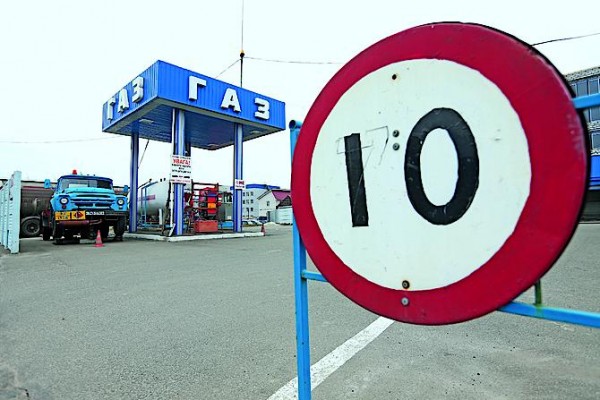
Since the beginning of the year, fuel prices have risen by 50–70% depending on its grade and type. In January, the average price of a liter of A-95 gas was UAH 10.68 and by October it increased 57.1% to UAH 16.78, according to the UPECO consulting company. The price of a liter of A-92 gas rose by 59.2% to UAH 16.53, while the price of diesel fuel increased by 70.1% to UAH 16.23.
Setting anti-records
Industry experts say that the main reasons for the rise in the prices of oil products are the devaluation of the Ukrainian currency and the increase in the tax burden. There have been several price shocks on the market since the beginning of the year. The first was registered in late winter – early spring. First on February 25–27 most of the gas stations in Ukraine raised the price of fuel by UAH 0.40–0.60 per liter. That was when the national currency devaluated from UAH 9.4/USD to UAH 10/USD.
A few weeks later, in March, the Verkhovna Rada revised the rate of the excise duty. But the changes applied only to diesel fuel, so its price has risen much faster than the prices of other types of fuel. The excise duty on Euro-2 and Euro-3 diesel was raised by 30.6–70.7%, to EUR 128/t, while the excise duty on Euro-4 and Euro-5 diesel fuel increased by 44–113%, to EUR 98/t. The continued devaluation of the hryvnia ignited prices in April and then a few months later in August.
Such a strong influence of the U.S. dollar on the Ukrainian market of petroleum products is due to the high share of imports – approximately 80%. Therefore, the cost of fuel is not going down, despite the fact that currently world oil prices are at their lowest in the last three years, says analyst at UPECO Oleksandr Syrenko. He says prior to the exchange rate upswings the drop in oil prices on the world market usually hit Ukraine 2–3 weeks later.
Shuffled risk
The sellers’ own supplies allow them to avoid fuel spikes and raise prices gradually, thereby maintaining demand. But by the end of summer – early autumn market players abandoned such a practice, preferring to increase their margins. “Now, nobody can predict the future value of the dollar, which is why prices at gas stations are immediately revised,” says CEO at the A-95 consulting company Serhiy Kuyun. For example, when on August 26 the U.S. dollar reached its historical maximum of UAH 14/USD, the wholesale market reacted immediately by raising prices by 2.48 – 4.6%. Two days later the prices of fuel rose at all gas stations by 4% on average. On August 27, the NBU started reinforcing the hryvnia and gross wholesale prices dropped, but market players changed their retail prices only 7–10 days later.
The shortage of hard currency also had a negative impact on exchange rate fluctuations. As it was previously reported by Capital, officially it is possible to buy dollars or euros on NBU auctions or by requesting commercial banks to buy hard currency on the interbank foreign exchange market. However, the supply of hard currency is limited. The rate at which fuel retailers manage to buy dollars is higher than the interbank rate by UAH 0.20–0.30. “The volume of working capital is a critical factor on the oil market – the more money you invest, the more you can make,” said CFO at the KLO chain of gas stations Vladyslav Stremydlovskiy.
The shortage of working capital leads to shifts in supply schedules and termination of contracts. In cases when accounts are settled in hryvnia, there are provisions in agreements for pegging the national currency to the U.S. dollar exchange rate. For example, last week traders specified the rate of UAH 13.15–13.25/USD. As a reminder, last Friday the interbank exchange market closed with dollar decline by UAH 0.03 – down to UAH 13.12/USD.
In addition, according to the directive of the NBU, professional market players are now forced to freeze their funds on foreign currency accounts for three days for the purchase of imported petroleum products. The currency shortage multiplied by the instability of the exchange rate forces oil traders to sacrifice demand and pass all the financial risks on to end consumers. “When you deposit hryvnia for exchange, you do not know the rate in three days. Accordingly, you cannot be sure that you will have enough funds,” explains Stremydlovskiy.
Changing preferences
The sharp rise in prices deters buyers. Over the period of nine months companies sold 2.9 mn t of fuel, according to the State Statistics Service. For comparison: last year during the same period they sold 3.2 mn t. Consumers are reorienting towards cheaper products. For example, Privat’s gas stations (operating under such brand names as Ukrnafta, ANP, Avias plus, Sentosa Oil, etc.) selling A-95 gas for UAH 1 below the average market price increased their market share in January – September by 6.5 pp – up to 34%.
Liquefied gas became a discovery of the year for motorists. On average, the demand for this product increased by 20%. Buyers are not deterred even by the 3.9% rise in prices for this fuel to UAH 8.94. “For the first time in three years the cost of liquefied gas was less than 50% of the price of A-95 gas,” said Deputy Director of Nadiya Stanislav Batrachenko.
Counterfeit products and war
In the current market conditions, all players in the oil products retail market revised their development plans. “We planned to build and buy approximately 100 gas filling complexes. Now we have to adjust our plans to a maximum of 40–50 gas stations,” CEO of WOG Retail, which operates the WOG retail chain of gas stations in Ukraine, Serhiy Koretskiy said this past May.
“This year, we are not talking about development. The main thing is to survive”, says President of the Association of Oil Market Operators of Ukraine Leonid Kosyanchuk. “This is the most difficult time for small retail chains. They have two options: either to sell their businesses or dilute their products,” he admits. Kuyun says 20% of the products on the market is fake. The main oblasts with high concentration of substitute products are Luhansk, Donetsk, Kharkiv and the Crimean peninsula. The expert says this year smart dealers learned not only to forge gasoline, but also diesel fuel by adding jet fuel.
As Capital wrote earlier, on October 1 the court seized the property of seven BRSM-Nafta gas stations in the Kyiv oblast at the request of investigators. According to the report of the press service of the Prosecutor General’s Office of the Kyiv oblast, the seizure of property was executed within the framework of the investigation of 10 criminal cases initiated after a thorough inspection of the chain of gas stations in response to the sale of poor quality fuel. Nearly 20 of 135 gas stations were shut down after being inspected. However, the company itself attributes the mass inspections to competition on the market, not the poor quality of its fuel.
Gloomy prospects
Industry experts are in no hurry to predict the further development of the market. “Should the dollar exchange rate continue to grow, fuel will be more expensive,” said Kosyanchuk. This would increase the popularity of liquefied gas. Today, 1.8 mn vehicles in Ukraine run on this type of fuel, according to the calculations of the Ukrainian Association of Liquefied Gas. Based on them, in 2015 this figure will increase by 20%.
Overall, in 2014 the demand for fuel will fall by 25% in comparison to 2013, experts predict. So far, there are no grounds for a reduction in the share of counterfeit products. “In order to reduce counterfeiting on the market a state body that will be in charge of quality control of petroleum products at filling stations must be created,” says Kuyun.
There are 6,890 gas stations operating in Ukraine (excluding Sevastopol and Crimea), according to data of the SSC.


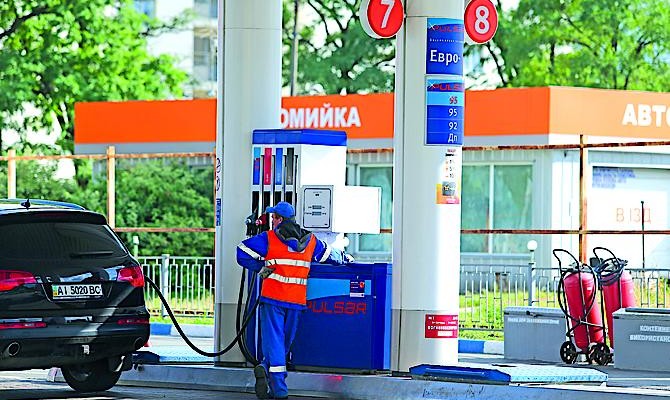
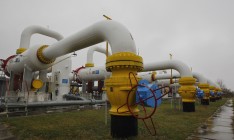
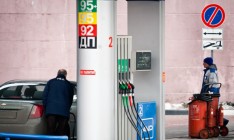
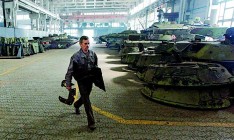

 of the agreement of syndication with Financial Times Limited are strictly prohibited. Use of materials which refers to France-Presse, Reuters, Interfax-Ukraine, Ukrainian News, UNIAN agencies is strictly prohibited. Materials marked
of the agreement of syndication with Financial Times Limited are strictly prohibited. Use of materials which refers to France-Presse, Reuters, Interfax-Ukraine, Ukrainian News, UNIAN agencies is strictly prohibited. Materials marked  are published as advertisements.
are published as advertisements.